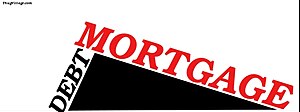
MCLEAN, VA–(Marketwired – May 19, 2014) – Freddie Mac (OTCQB: FMCC) released today its U.S. Economic and Housing Market Outlook for May, showing that regular supply and demand forces continue to produce unexpected results as the housing recovery readies to shift into a higher gear during the spring home buying season. The complete May 2014 U.S. Economic and Housing Market Outlook and forecast table are available here.
Outlook Highlights
- Projecting new home construction to increase by 18 percent, and house price appreciation moderating to an annual growth of 5 percent in 2014.
- Maintaining new and existing home sales at 5.5 million for 2014, the same as for 2013, as the inventory of homes available for sale remains low in many markets.
- Single-family originations are expected to drop about 35 percent in 2014 relative to 2013, based on the large decline in refinance volume. Refinance is expected to represent about 40 percent of this year’s originations, down from about 60 percent in 2013.
- While net household formation continues to increase, the overall level remains lower than what would be expected; stronger job and income growth are necessary to support additional household formation.
- Expect the 30-year fixed-rate mortgage to gradually rise higher, ending the year around 4.6 percent. We expect fixed rates to rise gradually during the second half of the year in part as a result of the Federal Reserve’s “tapering” of net MBS acquisitions.
Quote
Attributed to Frank Nothaft, Freddie Mac vice president and chief economist.
“The housing recovery is struggling to shift into a higher gear, and obviously there are various imbalances holding this back from happening, but at the heart of the matter it comes down to jobs. Housing needs stronger, and just as important, sustained levels of job creation to get the housing engine firing on all cylinders. April’s jobs numbers were encouraging, and nothing will solve the supply and demand factors faster than keeping employment growth going. Until we see this happening, we’re revising our forecast lower in several areas on an annualized basis. While we still see an improving trajectory for the housing market, we’re pushing it out a few months from our earlier forecast because we expect GDP growth to pick up in the final three quarters of the year from what was clearly a dismal first quarter reading.”
Freddie Mac was established by Congress in 1970 to provide liquidity, stability and affordability to the nation’s residential mortgage markets. Freddie Mac supports communities across the nation by providing mortgage capital to lenders. Today Freddie Mac is making home possible for one in four home borrowers and is one of the largest sources of financing for multifamily housing. Additional information is available at FreddieMac.com, Twitter @FreddieMac and Freddie Mac’s blogFreddieMac.com/blog.
Please help to keep this blog going
Let us Sell or help you buy your new home or land
John J. O’Dell Realtor® GRI
O’Dell Realty
(530) 263-1091
Email John
BRE#00669941



























